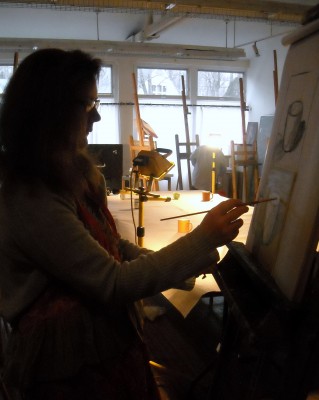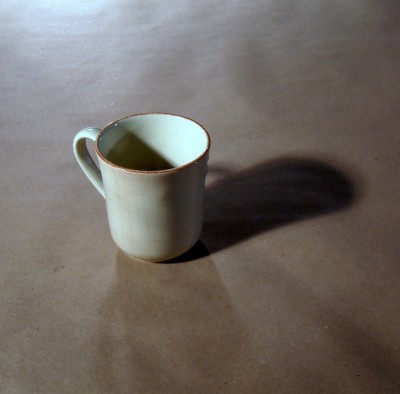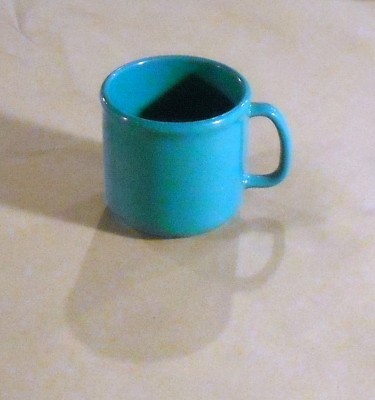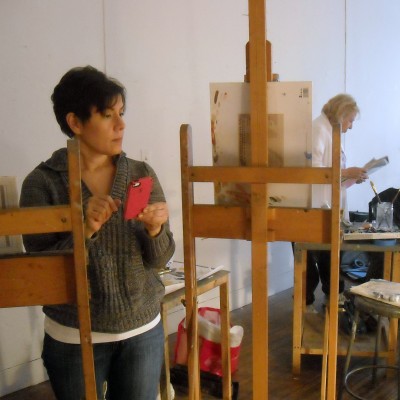Students are working on canvas board for the first time. To begin that process, the student makes some trial sketches on paper to work out a composition-the balance between the subject matter and surrounding space- before drawing the subject on canvas with charcoal.
As seen above, this student traced the outline of the canvas board onto the newsprint pad before making her trial sketch within it. This helps her to plan her composition for the painting more accurately.
Charcoal is easy to erase and adjust, so the same outline can be maintained while trying out different sketches for a one subject painting. Notice how she has positionned her canvas so she could use her trial sketch as a guide when she began the process of drawing, then painting onto her canvas.
Since the shadow value structure is key to developing the illusion of spatial dimension when you paint, it’s helpful to make sure the form and cast shadows on your subject are clearly defined. Use artificial lighting to do this. This amounts to making sure you have a clearly marked path in the woods so you won’t get lost!
Whatever the color of the subject, the role of the shadow values is the same: to make the subject, once replicated on your painted surface, looks dimensional and as though it has weight, gravity acting on it, a resting place.
Form shadows-the ones on the subject- make the object look three dimensional, while cast shadows cue our eyes that the subject is resting on a surface, and has weight.
“Shading” is a general term that students starting the class are already using. It refers to putting shadows in. However, it’s important to identify and learn about the specific shadow value shapes that get us to our painting goal, which in this exercise is the illusion of spatial dimension.
The shadow patterns created by your light source can’t easily be replicated once the lighting is removed (ours have to be changed for the next class). Taking a photo allows you to do that more reliably in the next session, or to work from the photo at home.
Chapter Eight in my book “Painting for the Absolute and Utter Beginner” covers this material in detail.




